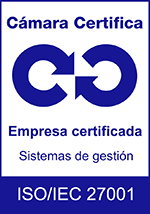We are going to talk about incident investigation and the checklist that OSHAS provides to assist us in gathering pertinent information in an accident.
OSHAS suggests for incident investigation the four-step approach.
Incident investigations are an essential part of any safety and health program.
occupational health and safety program
. All incidents must be investigated, including accidents resulting in fatalities, injuries or property damage. Incident investigations help prevent future incidents by uncovering root causes, identifying workplace hazards and establishing corrective and preventive action plans.
To assist organizations in effectively investigating incidents, OSHAS has made a number of resources available to employers, including an Incident Investigation Guide. The purpose of the Guide is to provide employers with a systems approach to help them identify and control the underlying or root causes of all incidents in order to prevent recurrence.
The approach consists of 4 steps:
1) Preserving / Documenting the Scene
2) Collect information
3) Determine Root Causes
4) Implement corrective actions
Ensure the collection of information relevant to an incident.
Incident information is gathered through interviews, document reviews and other methods. To help ensure that all information pertinent to an incident is collected, the OSHAS guide provides the following checklist (found in Annex E, page 23):
To make the incident data collection phase as effective as possible, it is advisable to adopt the checklist proposed by OSHAS or to create your own checklist. their own using it as a model. In addition, ensure that the checklist is part of a comprehensive incident reporting and investigation process enabled through some tool, to more effectively share data and analyze it to identify trends (e.g., times of day when incidents occur, underlying causes and roots). The use of software, as opposed to paper forms or spreadsheets, also allows you to easily adapt the checklist for different types of incidents and assign action plans to ensure that corrective and preventive actions are being completed.
Source: Jean-Grégoire Manoukian



